Existing User Log In
New User Registration
Register for a free account to gain full access to the VGChartz Network and join our thriving community.



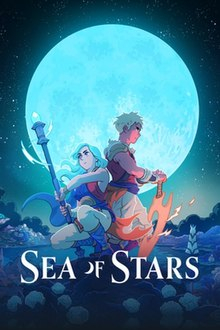

America - Front
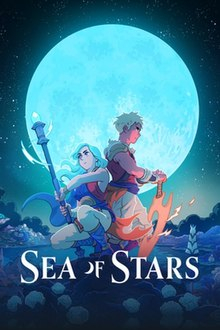

America - Back

Sabotage Studio
Role-Playing
 (Add Date)
(Add Date) (Add Date)
(Add Date) (Add Date)
(Add Date)
| Owners: | 0 |
| Favorite: | 0 |
| Tracked: | 0 |
| Wishlist: | 0 |
| Now Playing: | 0 |
Indie developer Sabotage has a clear, straightforward mission statement: "to create our own definitive editions of the game genres we enjoyed as kids." The small Quebec-based studio certainly fulfilled those mission parameters with its breakout effort, The Messenger, a finely-tuned action-platforming adventure with throwback graphics and modern gameplay sensibilities. Its sophomore project, Sea of Stars, pivots away from side-scrolling action and aims to riff on the kind of top-down turn-based RPG that inspired legions of fans in the SNES era — games like Chrono Trigger and Super Mario RPG. But can it compete with the excellence of The Messenger, and with dozens of retro role-playing games already on the market?
When it comes to narrative, the answer is absolutely yes. Set in a fantasy world where generational "Solstice Warriors" — children born on summer and winter solstices — are trained to defeat evil abominations left behind by the enigmatic "Fleshmancer", Sea of Stars does a stellar job establishing a central conflict and then developing a believable world and memorable characters around it. The worldbuilding is immaculate. Everything has a story and a mythology attached to it, which Sabotage portions out in cleverly small doses to avoid any premature revelations. In one of its more inspired strokes, the developer introduces into the party a traveling historian who tells ancient tales around the campfire — tales which then make appearances in the central storyline.
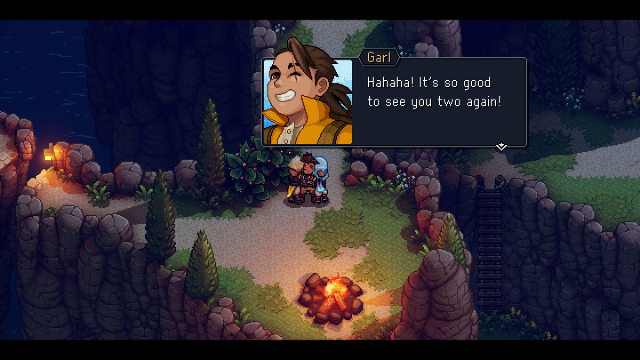
Sea of Stars benefits not only from the credibility of its universe, but from the authenticity of its characters. The game takes its time introducing the Solstice Warriors Zale and Valere, and their childhood friend Garl, but the wait is worth it, particularly to establish the unshakable bond among its three main protagonists. Their relationship is the heart and soul of the game, and it pays huge dividends. Other important characters who join, help, or antagonize the party are similarly well-developed, with compelling personalities, quirky behavior, and lots of emotional baggage. These heroes and villains will make you laugh, make you cry, break your heart, and give you hope.
They will also prove their martial prowess in turn-based battles, the mechanical core of Sea of Stars. These unfold similarly to the skirmishes in Chrono Trigger: the action takes place directly in the map, as opposed to a separate battle screen; and there's a strong focus on spacing and grouping, and on synergistic combo attacks between two characters. Sabotage adds extra texture to this framework with action commands in the heat of battle, a la Super Mario RPG. By pressing A as a regular hit connects with a monster, for example, you will increase outgoing damage. If you do the same while on the receiving end of an enemy strike, you'll reduce incoming damage. Most attacks and spells in the game can become more potent with the proper timing of these inputs.
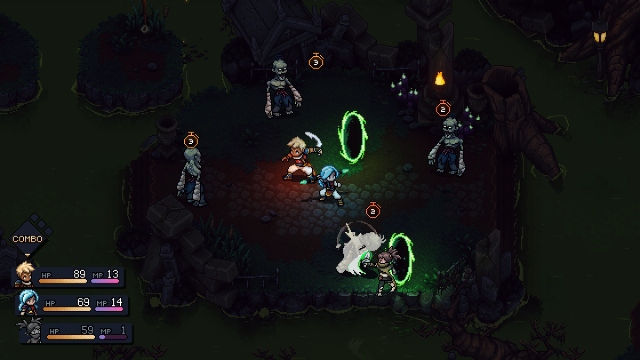
Although the combat system in Sea of Stars mostly relies on Chrono Trigger and Super Mario RPG, it experiments with a lock-breaking mechanic in battle that helps distinguish it from the classics. Certain enemies and bosses will display a lock combination during fights, along with a timer. In order to "break" the lock and cancel the monster's planned powerful move, you'll need to use the right characters, with the right damage types — e.g., blunt, slicing, sun, moon, poison — to remove each lock tile before the timer hits zero. Success in Sea of Stars isn't just about leveraging character skills to take advantage of enemy elemental weaknesses; it's also about deploying resources and party members in the proper order to maximize your chance to halt deadly attacks. It's a chess match within a chess match, and it expands the strategic potential of the game considerably.
So too does "boosting", another quirk of the battle blueprint in Sea of Stars. Each regular strike against an enemy generates "Live Mana", which any player can absorb to enhance their attacks, spells, combos, etc. In the case of regular attacks — and this has huge ramifications for lock-breaking — the character's innate magic damage type is added on top of their weapon's damage type. A boosted staff strike from Valere, for example, will deal blunt and lunar damage. It's yet another variable to manage, and another tactical layer to the game.
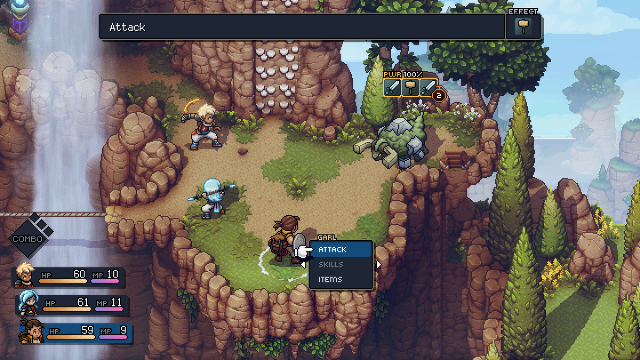
Fighting isn't the only thing you'll do in this role-playing game, of course. Your party will travel across the world on a mighty quest, visiting dungeons, towns, and other landmarks, and encountering new technologies and societies along the way. If Sea of Stars is disappointing in any way, it's in the organization of this quest. Make no mistake: the game's campaign is, overall, great, buttressed by a stellar narrative, and filled with thoughtfully-designed dungeons, fearsome monsters, and powerful loot. But it's paced and assembled in an odd way. For the first 30 hours of the game, the adventure is, at times, regrettably streamlined. You'll move from one area to the next, in a mostly predetermined order. There isn't much room to explore or investigate outside of the confines of the central quest line. In fact, the game doesn't support many side quests during this period, apart from a rewarding community-building project in an island town, a fishing mini-game, and a diverting parlor game called "Wheels".
Don't misunderstand: Sea of Stars does have a lot of side content — about 10 hours of it — but it's all backloaded. The game only prompts you to complete several missions right before the final showdown, or suggests quests after you've beaten the game and witnessed one possible ending. These tasks are mostly challenging and enjoyable, provide narrative closure, and lead to the best possible ending, but they're also anticlimactic.
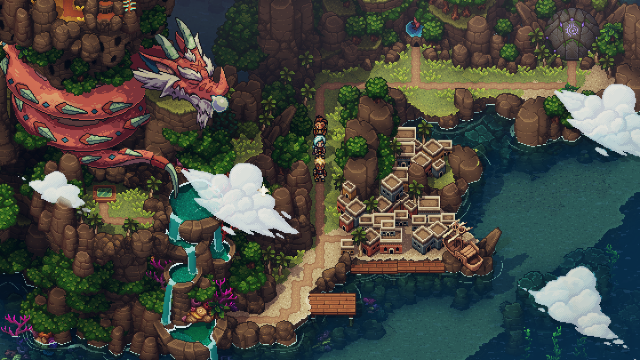
Another minor fault with the campaign: puzzle-solving in dungeons. In many fortresses and enemy keeps, you'll solve environmental puzzles by moving blocks, redirecting light and, in a couple instances, playing the card-flipping game concentration. While these don't detract from the experience, neither do they add value to it. In many cases, they're superfluous.
There's nothing superfluous about the game's graphics, however; they're essential to its greatness, and they're spectacular. A lot of modern indie developers have delivered eye-catching pixel art over the last decade, but Sabotage has arguably eclipsed them all with Sea of Stars. Everything looks phenomenal, including character and monster models, environments, the overworld, and everything in between. Combat is a joy to witness, thanks to fluid movements and meticulously-detailed "ultimate" attacks, and even something as simple as walking through a dimly-lit cave or over a tightrope at sunset is unforgettable, due to the developer's use of light, shadow, and reflection.
Indeed, Sabotage's attention to detail is sometimes astonishing. Apart from the multitude of little graphical flourishes that bring the game to life, there are small audio features that add to its atmosphere, like the clink of a certain character's feet on stone steps, or theme music changing subtly from day to night.
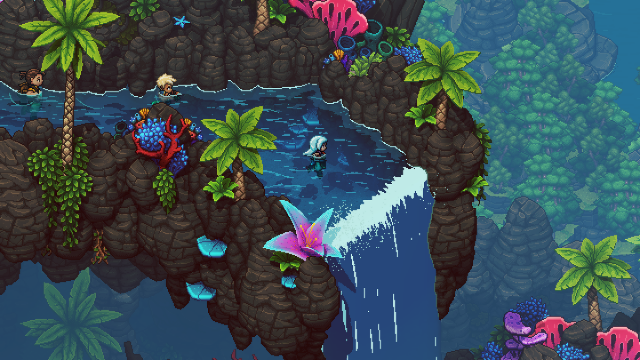
Speaking of music, the soundtrack to Sea of Stars, heavy on drum beats and synth sounds, is whimsical, eclectic and, in general, dependable. It's overshadowed by the game's art direction, and doesn't benefit from comparisons to the better indie game OSTs out there, but it gets the job done.
Sea of Stars proves The Messenger was not a fluke. Indeed, this follow-up is superior to Sabotage's freshman effort, not to mention many other indie RPGs out there. Thanks to the studio's amazing attention to detail, and its investment in worldbuilding, turn-based mechanics, and production design, Sea of Stars has emerged as one of the best games of 2023. At the same time, Sabotage has cemented its reputation as one of the premier independent developers in the industry today. It will be exciting to see how the stars align for the studio moving forward.









